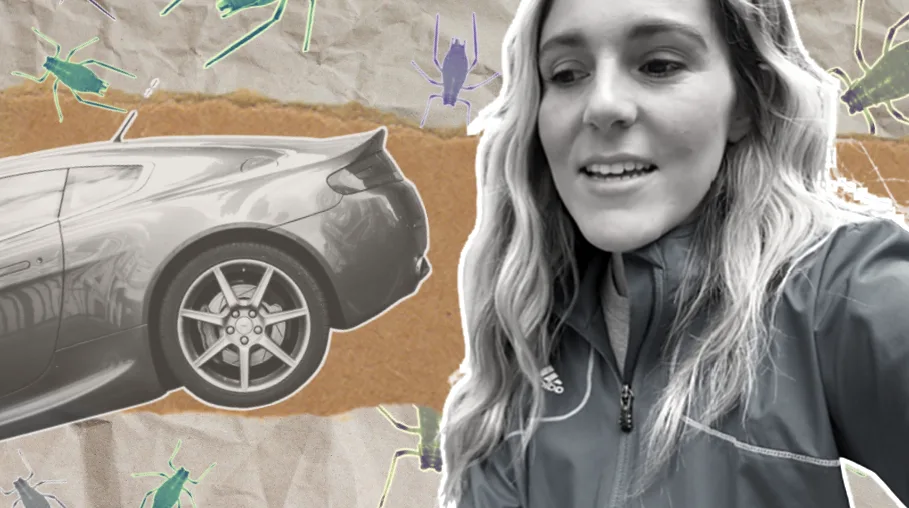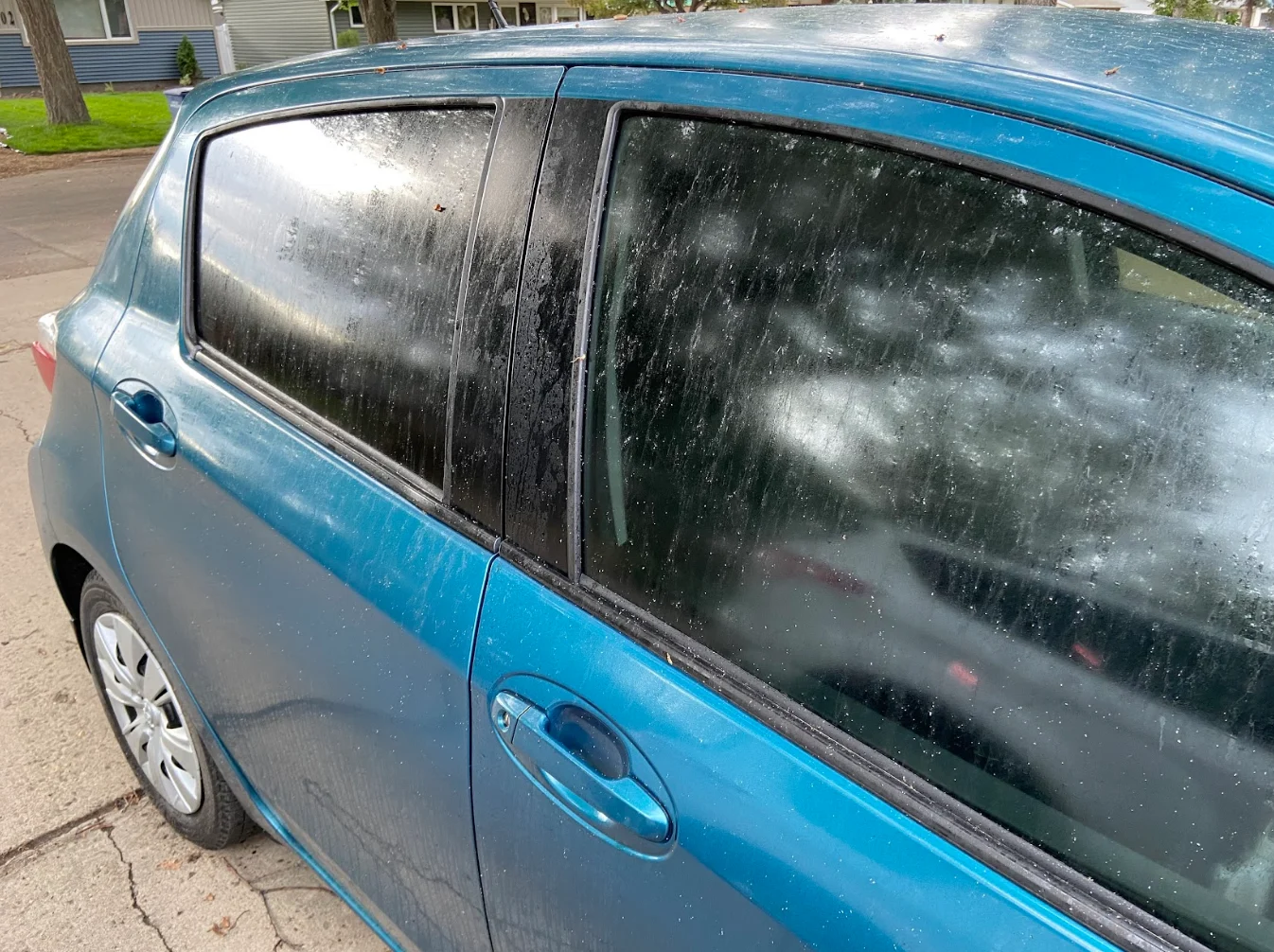
It's 'raining poop' on the Prairies. Thanks, aphids
Given the hot and dry conditions, residents may have to wait for the weather to change to see an improvement.
It has been a hot and dry summer for much of the Prairies, and that can be a good thing - especially if you happen to be an aphid, a tiny insect that dines on tree sap.
Also referred to as 'tree lice,' aphids have been thriving in the conditions - and they're congregating on trees and excreting sticky feces everywhere.
"I checked on my car after it rained last week, and I was surprised to find a syrupy substance all over the vehicle," recalls Lia Nardone, the social media coordinator for The Weather Network, currently based in Moose Jaw, Saskatchewan.

Aphid feces covers vehicle in Moose Jaw, Sask. (Credit: Lia Nardone/The Weather Network)
"It was almost like glue. I'm new to Saskatchewan, and I've never seen anything like this before. When I found out the substance was bug feces that sometimes rains down from the sky, I was immediately grossed out."
So what exactly is happening here?

File photo of an aphid in southern Ontario. GIF created for The Weather Network by Cheryl Santa Maria. (Wikipedant/Wikipedia) CC-BY-SA 4.0
Well, for starters, there are over 4,000 species of aphids. Some target agriculture, and others - like the ones above Lia's car - prefer elm trees in residential spaces.
"The plant fluids are rich in sugar and water, but relatively poor in nutrients," explains James Tansey, Ph.D., a provincial entomologist for the Saskatchewan Ministry of Agriculture.
"They need to process a lot of [sap] to get nutrients for growth and reproduction."
That essentially leaves them in a "perpetual state of diarrhea," Tansey says.
In Winnipeg, Manitoba, city officials have been receiving complaints from residents about the goo but there isn't much that can be done about the mess, and because aphids reproduce so quickly - about once every seven days - it's difficult to curb their population, at least until the weather changes.
"With things winding down in the summer, as host plant quality decreases and the leaves yellow, the elms become less suitable, and they will start producing wings and hit the road," Tansey says.
In the meantime rain will wash some of the stickiness away, but if your area isn't seeing much of that, you can try spraying trees with a hose to knock down some of the aphids.
A small number of aphids won't typically hurt plants or trees, but large populations can damage leaves or stunt roots.
